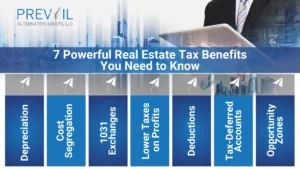As a passive investor evaluating a commercial real estate syndication, you need to know where to start before you can tell whether a specific property or investment is a good fit.
One of the critical components you should review when evaluating any potential real estate syndication deal – is the deal structure.
Real estate syndication structures dictate how the returns in the deal will be split up between you and all the other passive investors (limited partners) and the general partners or the real estate syndicators.
Understanding real estate syndication structures, specifically: splits, preferred returns, and waterfall structures, are crucial to your success in finding real estate investments to help generate the most passive income and help you build your wealth over time.
Real Estate Syndication Structures
Every real estate syndication deal is structured differently. So, depending on which investment group you’re working with, you could be looking at widely varying investment opportunities simply because of the syndication structure.
For the sake of this article, we’re explaining the type of real estate syndication structures we typically see in real estate investment opportunities.
There are three main components generally used to structure a real estate syndication deal.
- The split between the limited partners and the general partners
- Preferred returns
- Waterfall structure
The Split Between The Limited Partners And The General Partners
The split in a real estate syndication deal is a simple percentage. As a passive investor, you’re likely wondering what rate of return you can expect to receive from your investment capital if you were to participate in our next syndication.
Again, while every deal is different, most often, you’ll see a 70/30 split, with 70% going to the limited partners and 30% going to the general partners as compensation for their hard work in managing the assets itself.
The split structure in a real estate syndication deal considers both cash flow and profits from the sale. During the hold period, the primary proceeds are cash flow dollars from tenants’ rent. 70% of the cash flow goes to the limited partners and 30% to the general partners. Upon the sale of the investment property, the profits are distributed in the same way.
Regardless of how the split ratios are structured, they should always add up to one hundred. While a 70/30 split is the most common, sometimes syndicators who are just starting out may offer an 80/20 split to incentivize more prominent institutional investors to invest a more significant capital amount.
Preferred Returns in Real Estate Syndications
So, you might be wondering, “Does the general partner group or the passive real estate investor pool get their money first?”
Preferred returns dictate who gets paid first when it comes to cash flow and distribution of proceeds from the sale. As a way to incentivize the investors on both sides of a real estate syndication deal, sometimes preferred returns are introduced into the equation.
The passive investors are given preferred returns, meaning they’ll get their cut first, which reduces fears and hesitations around contributing capital. Meanwhile, if passive investors are the only ones getting any returns until the property exceeds 7% in returns, for example, the general partners and incentivized to ensure the property becomes profitable in excess of 7% as quickly as possible so they can earn a little money too!
Waterfall Structure
A waterfall structure simply means that as an asset’s performance increases, the percentage of its return, the general partners and management team will be compensated more as payment for their expertise in making that asset perform at a higher level.
A typical market real estate syndication structure is a 7% preferred return with a 70/30 split. To explain it further, the first 0% to 7% of returns go directly to the limited partners, and the general partners receive zero. However, if the returns reach 7% to 14%, the 70/30 split kicks in, with 70% of the proceeds going to the limited partners and the remaining 30% to the general partners.
Most passive investors don’t realize that nearly all real estate syndications have a waterfall structure. Once a particular return is achieved, the format changes from a 70/30 split to a 50/50 straight split.
A waterfall structure incentivizes the general partners to expertly manage the asset, getting it above and beyond their initial projections. In this situation, returns of 14% and above and any cash flow or profits from the sale would be a 50/50 straight split between limited and general partners.
Be sure to read the fine print of your PPM – “Private Placement Memorandum” and investment summary to verify whether the real estate syndication structures you’re considering include a distribution waterfall because usually, they do.
Understanding the Cash Flow in a Real Estate Syndication
Passive investors need a solid working knowledge of how best to evaluate the structure of a commercial real estate syndication so they can determine whether the projected returns are aligned with their financial goals. Understanding the typical real estate syndication deal structures can help you know what to expect as you embark on your vibrant journey as a real estate syndication investor.
When you have clarity around general syndication structure elements such as splits, preferred returns, and waterfalls, you’ll better be able to determine whether a particular deal is a good fit for you and your financial goals. Furthermore, the goal is to have confidence when selecting a deal. So, through understanding these fundamental concepts, investing in syndication opportunities becomes less intimidating, which better positions you to start building your wealth and your portfolio.
Prevail Innovative Real Estate Opportunities, LLC., (PREO) is affiliated with Prevail Wealth Advisors, LLC (Prevail IWA) and Prevail Strategies LLC., because they are under common ownership and control. PREO was formed to provide real estate investment opportunities for high-net worth investors looking for diversification. Prevail Wealth Advisors, LLC., is a federal registered investment advisor. Registration with any securities authority is not an endorsement of the services offered by the investment adviser. Fixed insurance products and services are offered through Prevail Strategies, LLC., a licensed insurance agency. Any investment by a Prevail IWA client into a PREO sponsored real estate investment would be without the involvement of Prevail IWA and should not be seen a s a recommendation by Prevail IWA. Additionally, Prevail IWA clients should realize that any capital they invest in a PREO-sponsored real estate investment would be completely outside of their advisory relationship with Prevail IWA and not part of their Prevail IWA account going forward. Finally, there are material differences between the type of investments PREO may offer and the investments on which Prevail IWA provides advice in terms of risk profile and liquidity, and the compensation PREO earns from a real estate project in which Prevail IWA clients invest may be materially different than the investment advisory fees Prevail IWA charges its clients.
An offer or solicitation to acquire interests in the investment may only be made by our Private Placement Memorandum (“Memorandum”) in accordance with the terms of all applicable security laws. All information contained herein is subject to and qualified by the contents of the Memorandum. Participation in any securities offering is limited to Accredited investors. Please call to obtain a copy. You must read it before investing. Past Performance is no guarantee of future results. An Offer to buy or sell any security is only made by our Private Placement Memorandum. Prevail Real Estate Opportunities, LLC., Prevail Innovative Wealth Advisors, LLC., and Prevail Strategies LLC., do not provide tax or legal advice. You should ask your CPA or tax professionals for decisions involving tax implications present and future.
This is not an offer to sell securities. This article should be construed as informational and not as an advertisement soliciting for any particular purpose.



















